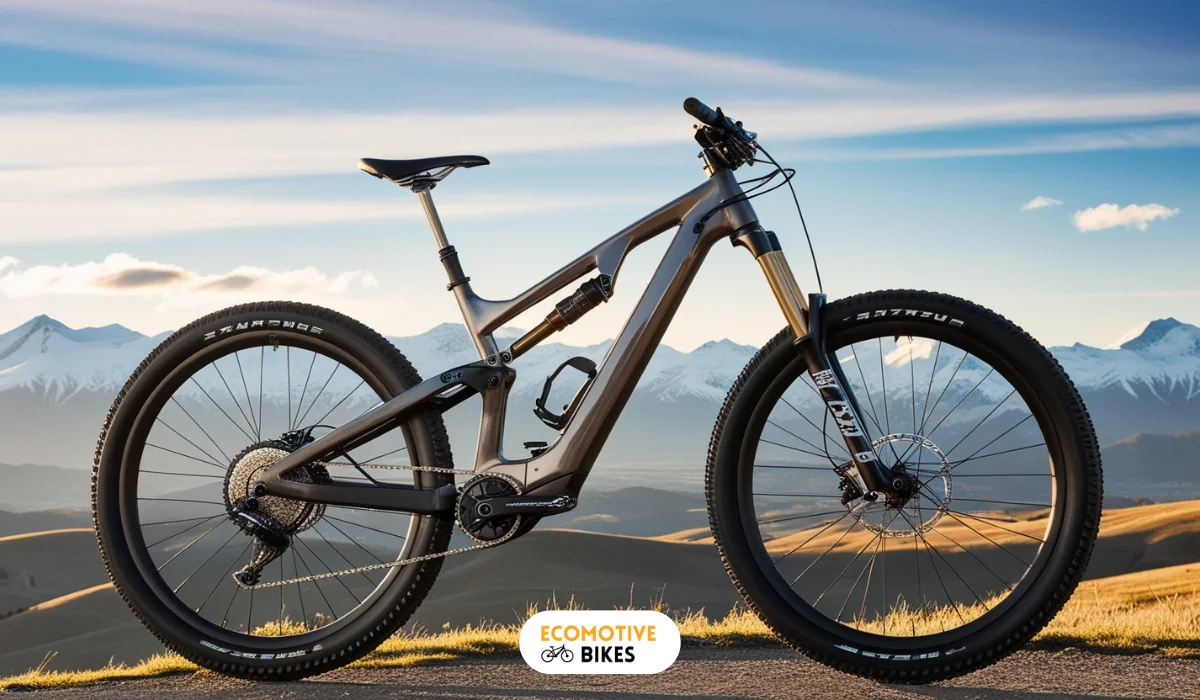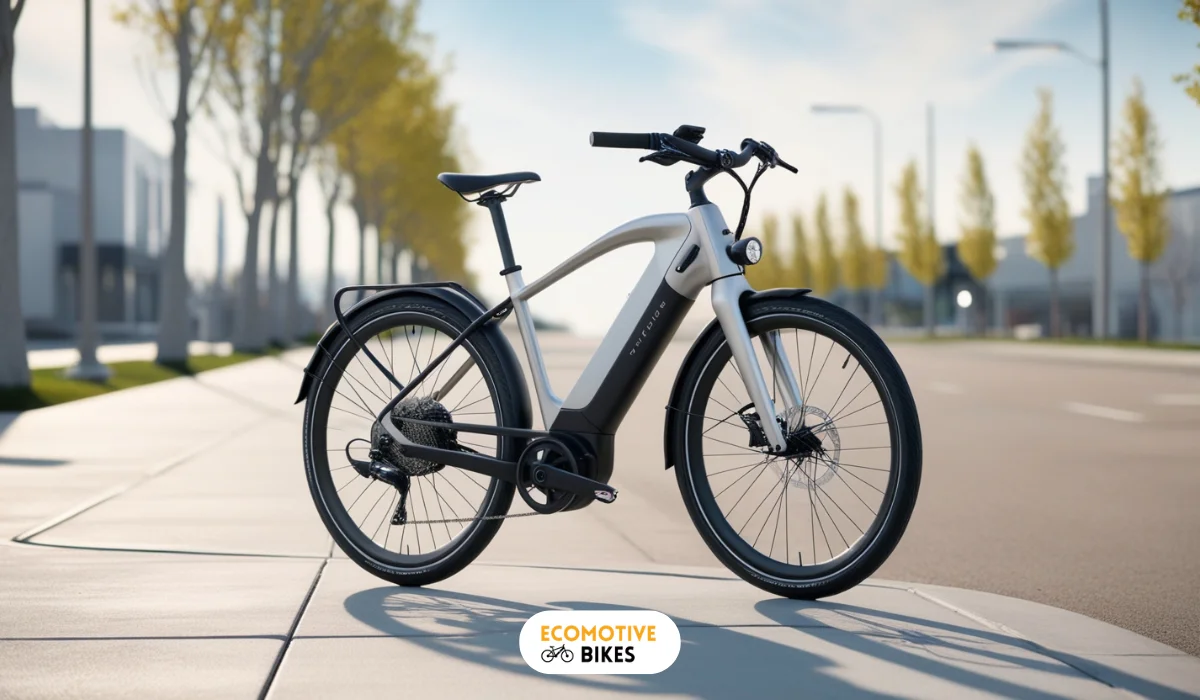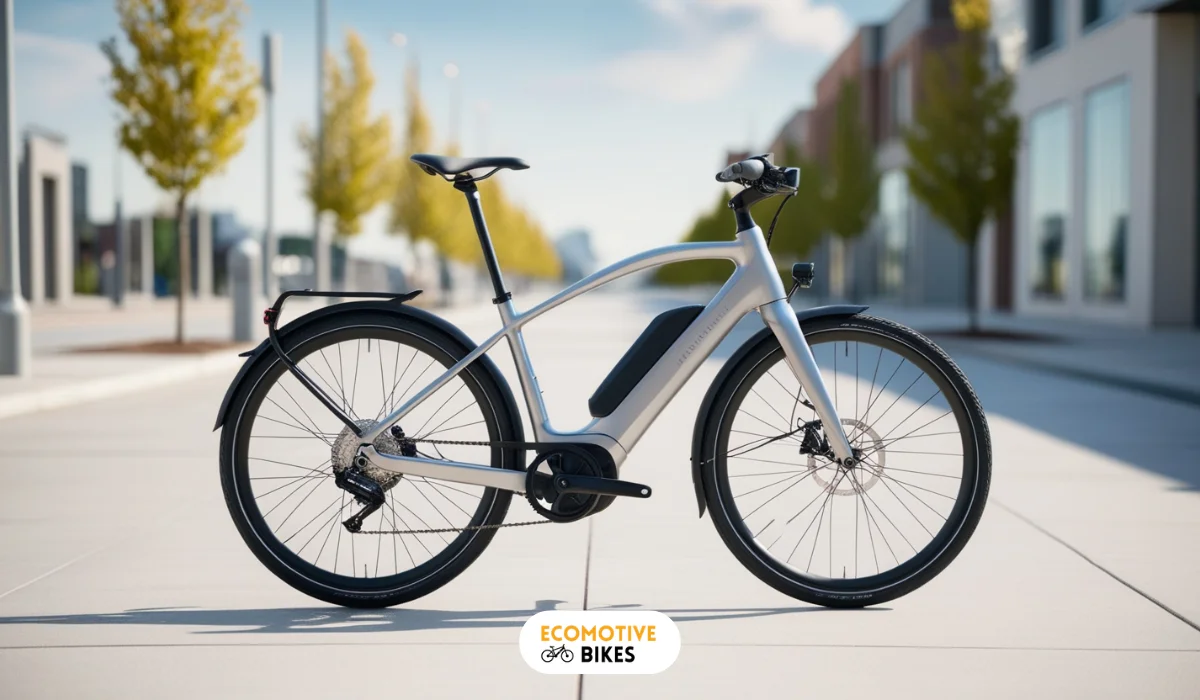Can you use a 52v battery on a 48v e-bike?
Curious if you can use a 52v battery on a 48v e-bike? Discover compatibility issues and potential impacts on performance and safety in our detailed guide.
Table of Contents
Related Articles:
Craving more juice for your 48v e-bike? You might be eyeing those 52v batteries, but before you install the extra kick, know if you really can use a 52v battery on a 48v e-bike? This blog post explores the technical aspects of the topic, the compatibility of 52v batteries with 48v e-bike to help you make an informed decision.
The benefits of a 52v battery over a 48v battery
You must be thinking about how 52v hits the sweet spot. Here are the 3 benefits of swapping for a 52v battery.
- Enhanced speed and performance: Performance gets a significant boost with a 52v battery on a 48v motor. The increased voltage results in higher motor RPM, allowing for quicker spins and enhanced speed.
- Increased power: Power is a key advantage of using a 52v battery. With higher volts come increased watts, providing more power for conquering steep hills and facing strong headwinds. For instance, the 52v battery offers a more potent performance, enabling riders to tackle challenging terrains with ease.
- Extended range: While the increase in range won’t be as dramatic. A 52v battery offers a greater range. This ability allows you to cover more distance before a recharge, thereby proving beneficial for a long ride.

Factors to consider the compatibility of 52v battery on 48v e-bike
While 48V is the standard battery voltage for many e-bikes, some riders consider upgrading to a 52V battery for potential performance gains. However, using a higher voltage battery can introduce compatibility issues with other e-bike components.
- Compatibility concerns and voltage limits: Voltage is crucial for optimal e-bike performance and e-bike systems are meticulously designed to operate within specific voltage ranges. Exceeding these limits can lead to malfunctions or damage to critical components. Always consult the e-bike manufacturer’s guidelines to verify compatibility before attempting any upgrades.
- The role of the controller: The electronic controller acts as the brain of your e-bike, regulating power delivery between the battery and motor. While some controllers can handle a slight voltage increase, others may not. Upgrading the controller alongside the battery might be necessary to ensure a harmonious integration.
- Assess e-bike system: Before modifying your e-bike electrical system, it’s essential to assess the compatibility of all components. Carefully review the specifications of your motor, controller, and other electrical components to ensure they can handle the increased voltage of a 52V battery. Consulting the manufacturer’s manual or seeking professional advice from a qualified e-bike technician is highly recommended to avoid potential damage.
- Legal and safety implications of modifications: In some regions, altering the original specifications of your e-bike might void warranties or even violate local regulations governing e-bike operations. Safety should always be a top priority. Ensure that any upgrades maintain the integrity and safety of the e-bike electrical system.
- Professional installation recommendations: If you decide to proceed with a 52V battery upgrade, consider seeking professional installation from a certified e-bike technician. Certified technicians possess the expertise to assess your e-bike system’s compatibility, make any necessary adjustments, and ensure a safe and successful upgrade process. This minimizes the risk of damage to your e-bike and enhances the overall safety of the upgrade.
- Potential risks and warranty considerations: Upgrading to a 52v battery on a 48v e-bike carries inherent risks. Using an incompatible battery can damage electrical components and void your e-bike warranty. E-bike manufacturers meticulously design systems for specific voltage ranges. Deviating from these parameters can lead to unforeseen malfunctions or safety hazards. Carefully consider these risks before modifying your e-bike’s electrical system.
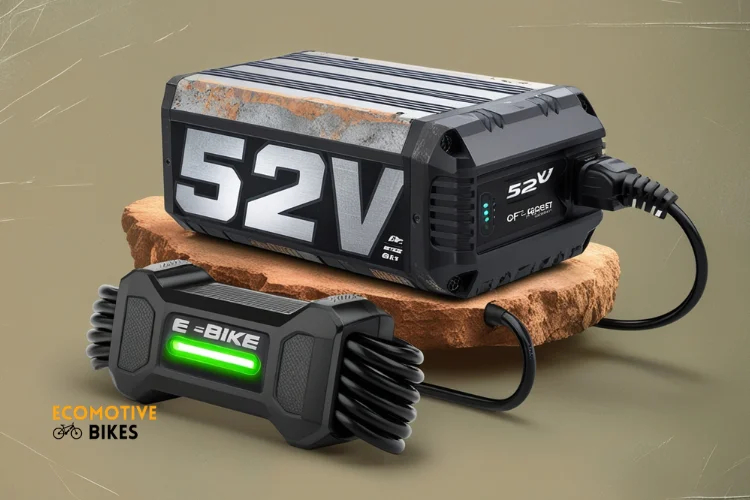
Why 52v hits the sweet spot?
The 52v option stands out as hitting the sweet spot. With increased voltage directly correlating to higher motor RPM and power output, a 52v battery offers a balance of speed, power, and range for optimal performance on a 48v motor conversion kit.
The interplay between voltage, power, and speed
- Hits: The 52v battery provides a significant advantage in terms of power and speed due to its higher voltage compared to a 48v battery. This translates to enhanced climbing ability, faster acceleration, and greater range, making it the preferred choice for many riders looking for top-tier performance.
- Speed: The relationship between voltage, power, and speed is complex and dependent on various factors such as motor design and controller compatibility. A higher voltage like 52v can boost motor RPM and output, offering increased performance without compromising safety or damaging components. This delicate balance highlights the importance of selecting the right battery voltage to optimize your eBike’s capabilities.
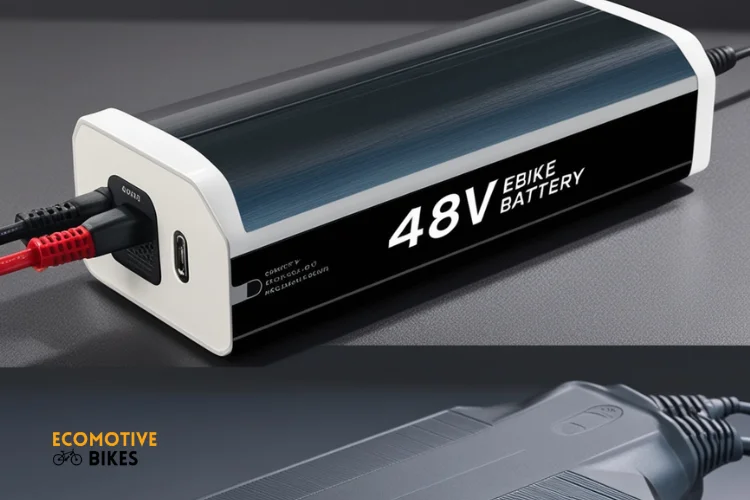
Things to consider before switching to a 52v battery
Before you swap out your 48v e-bike battery for a 52v one, keep these two things in mind:
- Controller compatibility: Ensure your e-bike controller can handle a 52v battery. Check the controller’s manual or contact the manufacturer to verify its voltage rating. A 48v 1000w controller might not be suitable for a higher voltage.
- Charger compatibility: Using the right charger is vital for safety and battery life. You’ll likely need a new charger specifically designed for 52v batteries to safely charge your new battery. Avoid using a 48v charger on a 52v battery to prevent damage.
Related: Benefits of dual battery ebikes.
FAQ about swapping batteries in e-bike
Can I use a 52V battery on a 36V e-bike?
No, it’s unsafe to use a 52V battery on a 36V e-bike. E-bike systems are designed for specific voltage ranges, and exceeding these limits can damage electrical components and void your warranty. Stick to a 36V battery for your 36V e-bike for optimal performance and safety.
How long does a 52V e-bike battery last on a single charge?
The range of a 52V e-bike battery depends on various factors like riding conditions, terrain, and motor power. However, you can generally expect a range of 25-70 miles on a single charge. For instance, with light pedaling on flat terrain at 10 mph, a standard 52V battery might offer a range of around 50 miles.
How fast can a 1000W 52V e-bike go?
A 52V 1000W e-bike can reach top speeds of 35 mph and potentially higher depending on the specific motor and overall e-bike design. Local regulations may restrict e-bike speeds in certain areas.
Can I use a lower-voltage battery on my e-bike?
No, it is not recommended to use a lower-voltage battery on your e-bike. A lower voltage battery won’t provide enough power to run the motor efficiently, limiting performance and potentially causing damage.
Final Words: Can you use a 52v battery on a 48v e-bike?
While using a 52v battery on a 48v e-bike might seem appealing for a potential performance boost, prioritizing compatibility and safety is paramount. Carefully assessing component limitations, consulting professionals, and adhering to legal regulations, you can make an informed decision that ensures a smooth ride on your e-bike.

